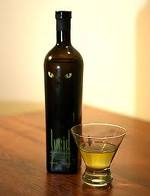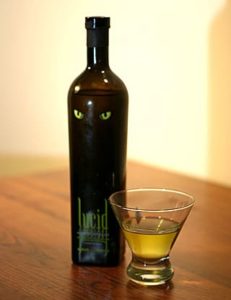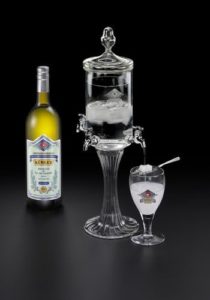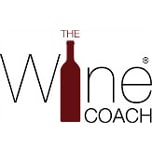
16 Mar Absinthe: Debunking the Myths

Lucid Absinthe Superieure, France $60
It’s said to have inspired the work of some of the greatest artists in the world— Degas, Manet, Wilde, and Hemingway, to name a few. Some think it caused homicidal rages and vivid hallucinations—and even drove Vincent Van Gogh to cut off his ear. You might think I am talking about love, passion, or even religion, but the alleged culprit is absinthe.
Absinthe is a distilled spirit with a distinct taste of licorice, made from various herbs, including anise, fennel, and grande wormwood. Originating in Switzerland, this awe-inspiring drink is often green and always strong—measuring between 50 and 75 percent alcohol. Sometimes called the Green Fairy for its alleged psychedelic effects, absinthe was even more popular than wine in the trendy cafés of Paris during the late 19th century. Never heard of absinthe? That’s because a series of events caused it to be outlawed around the world in the early part of the 20th century. Recently, scientists and officials have been able to sort out fact from fiction and, as a result, absinthe is once again available in the United States.
The ban on absinthe was the result of a number of factors: the temperance movement, strong opposition from the struggling wine industry, and a horrific murder in 1905. Its popularity and strength made absinthe a huge target for those looking to eradicate the use of alcohol. Jumping on the bandwagon were the winemakers of Europe, whose vineyards were being destroyed by phylloxera, a tiny insect that destroys grapevines. The blight of phlloxera caused an increase in wine prices, which, along with the growing popularity of absinthe, meant a steady loss of market share for winemakers. The third strike came from Switzerland in 1905 with the news of a sensational crime; absinthe was said to have driven a man to kill his entire family. What was left out of the story was that the man was an alcoholic who had consumed two glasses of absinthe along with mass quantities of wine and cognac. Bans on absinthe began almost immediately.

Kübler Absinthe Superieure, Switzerland $56
In 2008, the U.S. government began allowing the sale of absinthe as long as producers adhere to a few stipulations. Even though the chemical thujone has never been proven to cause psychotropic effects, it must measure less than 10 ppm. In addition, the label cannot market the alleged mind effects of the drink and the word absinthe must be used with other terms in a very discreet manner. Since absinthe is turning up in retail shops as well as trendy restaurants, it makes sense to know the proper way to serve it. The most traditional way to serve absinthe is to louche it: adding cold water, ideally in drips, which turns the spirit from green to milky white. The color change is a result of the herbal oils’ insolubility in water. The water is sometimes poured over a sugar cube on a slotted spoon to sweeten the drink and take the edge off its distinctively bitter finish. Use about 1–1.5 ounces of absinthe and dilute with anywhere from 3–5 ounces of water. Ideally absinthe is served in Pontarlier glasses, which are named after the town in the Loire Valley where the Pernod Fils, one of the most famous producers of absinthe in the 1800s, built their factory in France. They are shaped much like water glasses with a bulge or indentation on the bottom, to measure the correct amount of absinthe.
“Absinthe has historically served as both an aperitif and digestive. When taken as an aperitif, it goes well with herbal scented appetizers. It can be taken between dishes as a palate-cleansing cordial or even served as a sorbet (absinthe sorbet),” suggests T.A. Breaux, master distiller of Lucid Absinthe in France. He adds, “With dessert, it goes especially well with anything flavored with coconut. And of course, in its historically purest sense, it reigns sovereign as a digestive.”
With the history and mythology surrounding absinthe, it’s no wonder it seems< so mysterious and alluring. With the ban now lifted, it is easy to find absinthe and discover firsthand what all the fuss is about. While you may not see any green fairies or pink elephants, it will be a truly unique experience.
Lucid Absinthe Superieure, France $60
Lucid’s bottle is marked with piercing cat eyes, alluding to the intensity inside. Made with all-natural herbs and free of dyes or chemicals, Lucid is a true absinthe. With a traditional green hue, it has amazing complexity, with intense herbal flavors and a backbone of black licorice. Softened a bit with a sugar cube and cool water, Lucid still packs a punch. It’s great as an after-dinner drink to sip as you contemplate life.
Kübler Absinthe Superieure, Switzerland $56
Crystal clear in color, Kübler, while still intense, tastes a bit more delicate than Lucid. The licorice flavors are more prevalent here, with less of an herbal taste. Hailing from the birthplace of absinthe, Switzerland, this clear version is considered a blanche style as opposed to its green counterparts. Kübler creates an intense, milky-white louche with the addition of the sugar cube and cool water. This just might give new meaning to milk and cookies!
(Reprint of an article wrtten for What’s Up Annapolis)
